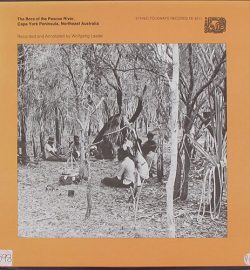The Tiwi are a unique group of Australian Aboriginals who have lived on Bathurst and Melville Islands (50 miles north of Darwin) for thousands of years. Although their life-style is comparable to that of mainland Aboriginals because of similar geography and climate the Tiwi in their splendid isolation have developed a culture which is both striking and distinctive. They do not use the didgeridoo, woomera and boomerang common to many mainland tribes. They neither circumcise nor have any stage of initiation which could be called a physical ordeal. Traditionally the Tiwi, secure in their very compatible environment, lived an idyllic life, a feature of which was the status accorded their elder men. Surrounded by large numbers of wives and children, and never having to worry about enemies from neighbouring regions the old men travelled constantly over their two islands, visiting other clan leaders and sharing in the considerable ceremonial activity which always related to Man and his Environment. There are no prohibitions on women and children in the ceremonial life of the Tiwi, and all still join in the spectacular, vigorous singing and dancing. Bodies, faces and regalia are painted with elaborate, ornate designs and adorned with colourful feathers. The most spectacular ritual of the Tiwi is undoubtedly the Pukamani (mourning) ceremony, in which the living pay tribute to the deceased by performing their dances around intricately carved and painted graveposts called Purintiringa.
Although steeped in tradition the Tiwi have always taken delight in recording current events in song, dance and mime. Recent themes around which songs and dances have been created include The Bombing of Darwin, Cyclone Tracy, and Armstrong On The Moon.
For the first time this exciting, age-old music which has related to the Australian environment for over thirty thousand years is presented to the world through the medium of stereo recording, jointly undertaken at Bathurst Island by the Aboriginal Artists Agency and the Australian Broadcasting Commission at the request of the Aboriginal Arts Board.








